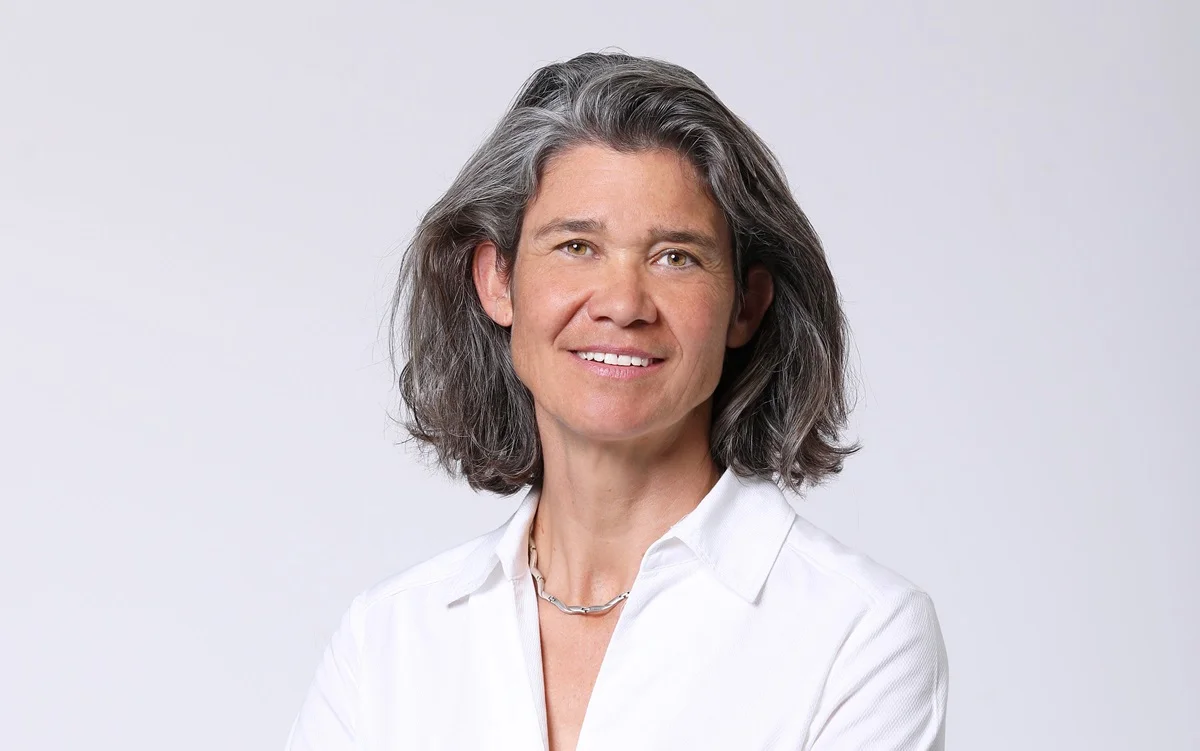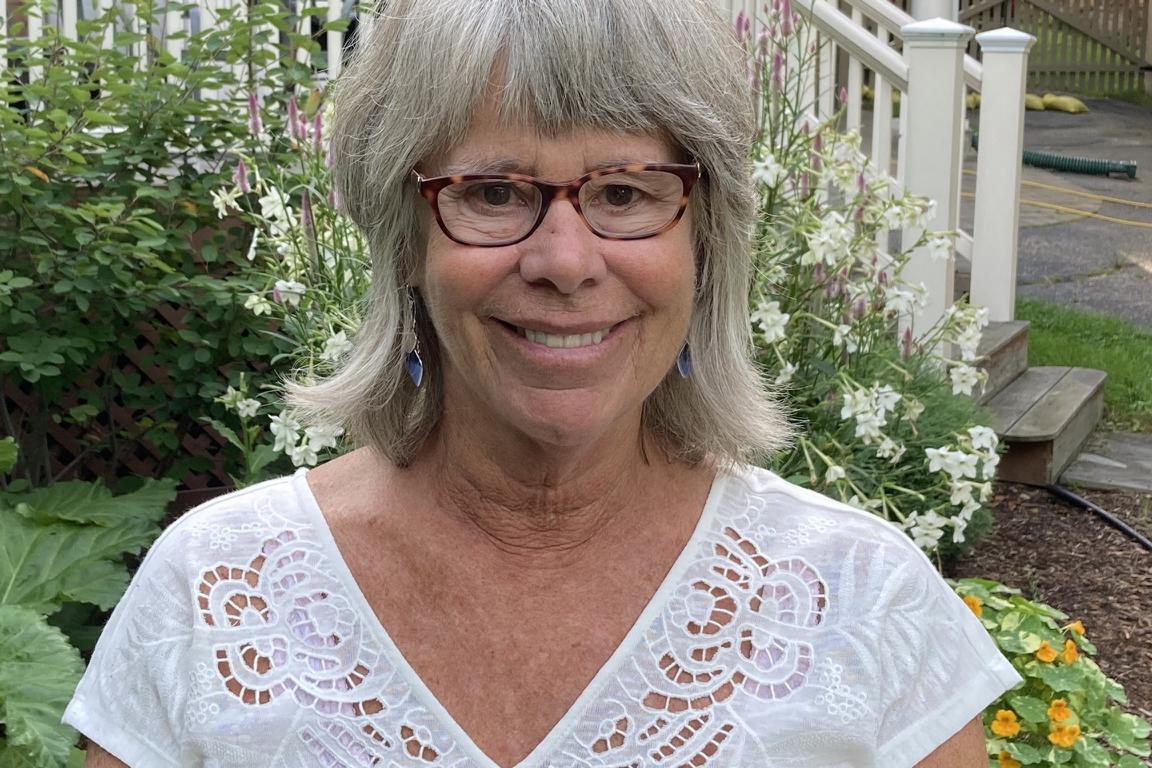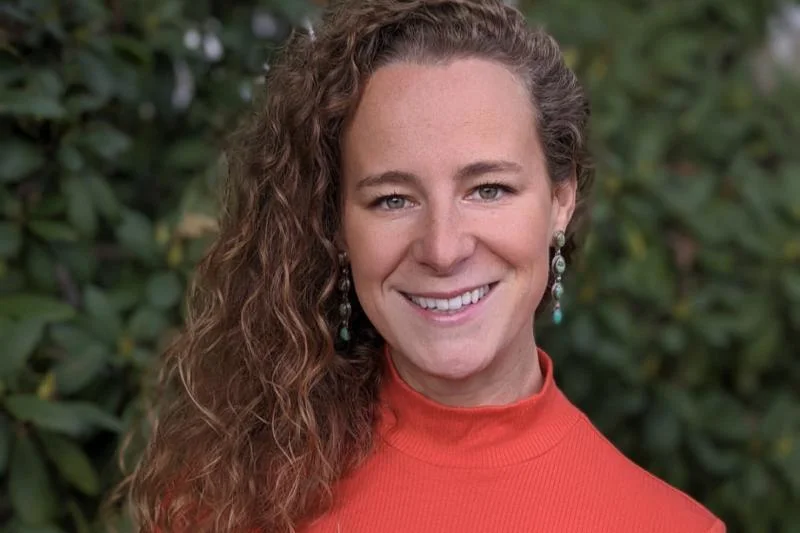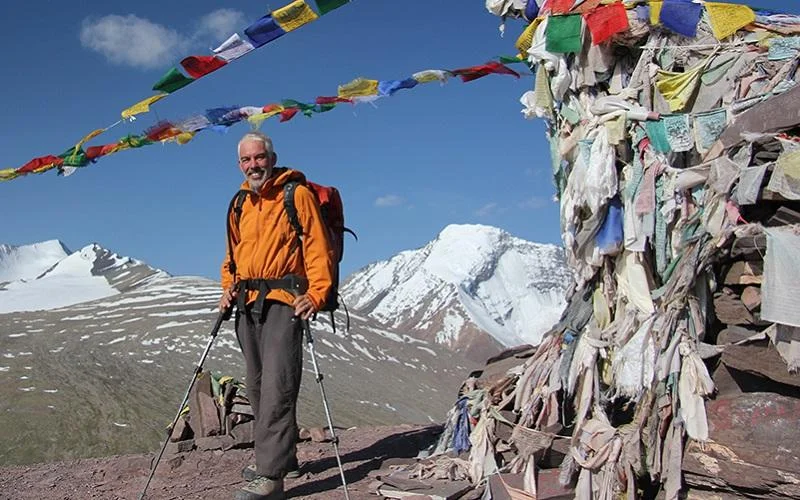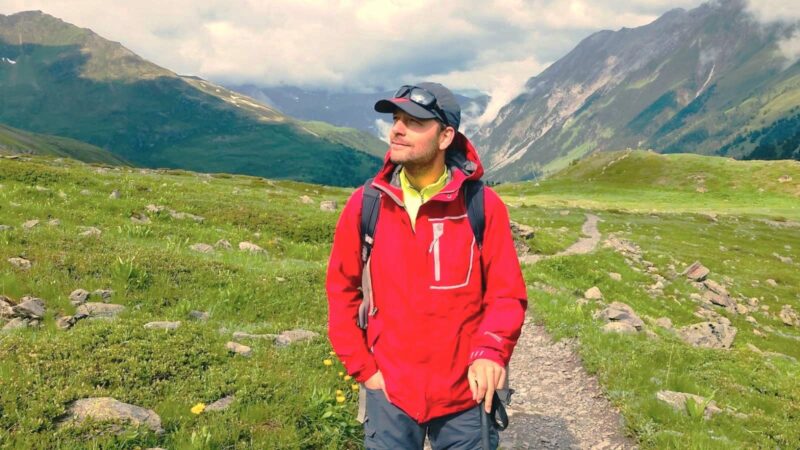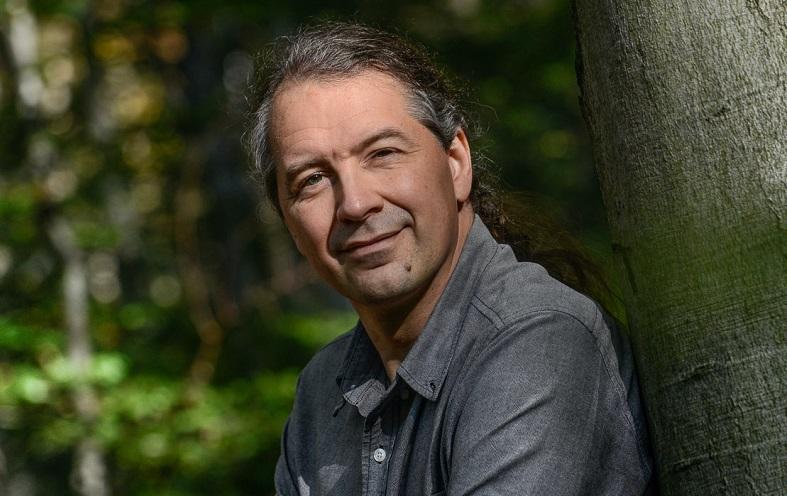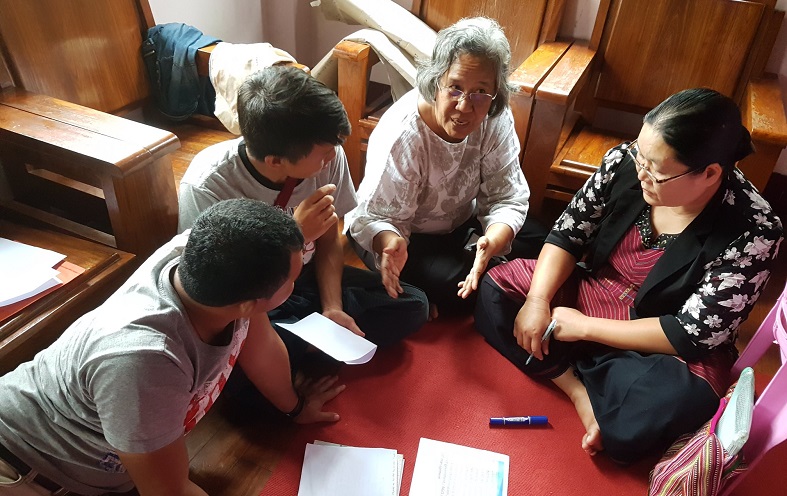
Potjana Suansri in this interview shares with us her many insights gained at the grassroots level of developing and managing community-based tourism initiatives in Asia and Africa. Hear about the keys to success and the pitfalls to avoid, and how this form of tourism linked to sustainable development has emerged from a niche area into a mainstream experience now promoted widely across travel channels.
Potjana, as one of the pioneers of community-based tourism (CBT) in Asia, do you remember how and why you got involved?
There are three main reasons why I became interested in CBT.
During the ’90s, Thailand’s tourism industry was growing fast. I was a social worker advocating people-centred, participatory development. I began to question the tourism industry. I wanted to know: “What kinds of benefits and impacts does the tourism industry have on local communities in Thailand?” and “How can local people participate in, benefit from, and influence the direction of tourism development in their areas?”
We considered ‘benefits’ holistically: social, cultural, economic and environmental. I wondered how tourism in villages could foster mutual respect and cross-cultural learning: a paradigm shift from customer-service provider to the host-guest relationship.
Past community work experiences had taught me that, to optimize tourism benefits at village level, cooperation would be essential.
In the 1980s and ’90s, the government did not appreciate NGO’s. Many grassroots, rural development projects in Thailand faced challenges, which required greater public understanding, recognition and support. Our team pioneered CBT at the ‘Responsible Ecological Social Tours Project’ (REST), under Thailand Volunteer Service (TVS), which is like a Thai Peace Corps. In the ’90s, our first CBT projects aimed to share the lives and challenges of rural Thais with the Thai middle class, and influence decision-makers. For example, we aimed to create more empathy among middle-class Thais for ethnic minority Thais, who were being forcefully evicted from newly established protected areas.
So, we designed village study tours to learn about indigenous land-use practices and the movement to support community-based natural resource management (the ‘People and Forest’ movement in Thailand).
We helped community members to design tours which challenged public misperceptions that all local, ‘hilltribe’ communities were engaging in slash and burn agriculture. The tours helped visitors to have a more nuanced understanding of sustainable and unsustainable practices.
In Koh Yao Noi, we helped small fishers to show visitors how they were suffering from illegal encroachment by massive trawlers. Other tours built public awareness of local communities’ organic and fair trade handicraft projects.
Following these pilot tours, our team concluded that tourism can be a tool for the Thai public and decision-makers to experience the charm of local lifestyles while listening and learning about the challenges faced by local communities.
What we hadn’t anticipated, but learned on the job, was that preparing to welcome tourists also supported community members to develop a wide range of new, useful skills, including food hygiene, accounting, and public presentation. So, we began to see tourism as a possible tool for sustainable community development.
The final reason was pragmatic. In 1992, after the cold war, international funding support began to move from Thailand to Laos, Cambodia and Vietnam. I was working as a Fundraiser for the Thai Volunteer Service. In 1994, I volunteered to lead a project using community-based tourism as a tool to educate visitors about life and challenges in local Thai communities. Tourists paid for these study tour programs.
Following the tours, tourists’ perceptions often changed. Many people looked for opportunities to support community projects in different ways, such as helping to find markets for community products, to promote financial support from rich people in the city to the poor directly, etc.
So, CBT also became a strategy to continue our development work without international donor funding.
How has CBT changed over the years?
Looking back, there have been clear phases in CBT development.
As mentioned above, the TVS-REST team started by preparing local community members to welcome Thai middle-class visitors. Essentially this was a national awareness-raising and advocacy activity.
From 1994 until 1997, Thais who were interested to better understand life in their own country joined these first community-based tours. However, this original domestic market did not grow as expected, due to the economic crises in 1997-1998.
During this time, middle-class Thais no longer had enough disposable income to travel. Tour operators for foreign travellers did not yet believe there was a demand for such ‘local’ experiences. So, our team registered as a tour operator to learn ‘on the job’ which markets and channels could help communities to reach guests.
Between 1998 and around 2003, the first signs of the ‘local experience / local benefits’ trend began to emerge. Our team were the main, national level, Thai organization supporting CBT. We started to get inquiries to organize tours for foreign visitors through companies like Hausler Excursions and Intrepid Travel.
We experimented with different markets to see how the guests and hosts enjoyed the experience: families, seniors, volunteers and student groups. We also had visits from many INGOs in the Indochina region to study our emerging CBT model.
However, the Tourism Authority of Thailand (TAT), which is responsible for marketing Thai tourism, still viewed CBT as a very niche market and did not pay much attention. Interest in CBT grew slowly among these niche markets.
Between 2004-2013, the trends of responsible tourism, voluntourism, and other forms of tourism which focused on learning and experiencing life in local communities were becoming really significant.
CBT tours were receiving positive feedback from tourists and tour operators. Several NGOs, responsible tour operators and universities were developing good quality CBT experiences.
The benefits of CBT were also becoming clearer. Telling their stories to visitors stimulated pride and sense of belonging among local communities, generated extra income and promoted cultural exchange among guests and hosts.
Experience sharing was supported by the Thai government Thailand Research Fund (TRF). In 2007, the REST team stopped operating CBT tours. We assessed there was sufficient demand to scale up CBT by moving into a stakeholder-facilitating role. REST partnered with the Thailand Research Fund to establish Thailand Community Based Tourism Institute (CBT-I), a research and development organization, working to support CBT action research, networking and marketing. We began seriously consolidating our body of CBT ‘How To’.
Several pioneering, action orientated projects, such as the EU Funded CSR-MAP Project, provided blueprints for how to facilitate well-prepared, collaborative supply chain networks between CBT groups and tour operators inside and outside Thailand.
The systematic application of a B2B supply chain approach into product development and marketing was an important ‘know-how’ landmark for CBT development, which stakeholders are still building on today. For example, in the International Trade Center Myanmar Inclusive Tourism project.
On the domestic front, a national economic stimulus package called ‘Thais tour Thailand’ encouraged Thai tourists to travel within Thailand. As a result of these tourism policies, domestic tourism was growing. Many communities were interested in implementing CBT. Many organizations stepped in to support the communities.
Since 2014 is a peak period for CBT in Thailand. The Thai government has included CBT as a formal ‘national agenda’, issued budgets for CBT destination development, and undertaken serious promotion to international markets in line with the global tourism trend on local experience.
CBT is integrated into the policies and plans of all major Thai government tourism organisations. Better education for rural Thais alongside the growth of social media has allowed CBT initiatives to communicate directly with Thai travellers, access markets and do their own social media marketing.
Now, CBT in Thailand is widely recognized, with better local management and better quality products, which have won support from the private sector.
However, the story is not all positive. The success of the original, sustainable CBT destinations came from a holistic approach, balancing culture, environment and economy. Projects were built on rigorous, step by step mobilization, training, and partnership building.
As CBT has become more mainstream, government and NGOs have jumped on the CBT bandwagon with a narrower focus on quantity and economic benefits. As a result, a significant number of new, weak destinations have been developed without a holistic, balanced understanding of the CBT concept; without learning from past work; without working closely with local communities; and without considering local realities of supply and demand.
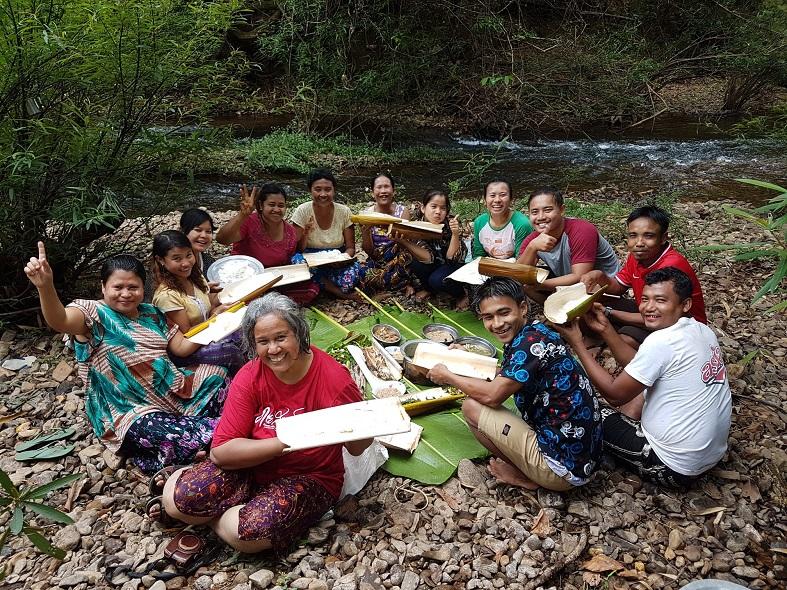
How has your own approach to community-based tourism changed over time?
Personally, I started as a community activist. Through the years, I have worked with more stakeholders, across sectors, including NGOs, academics, and responsible tourism businesses. I have learned the value of working across sectors and facilitating partnerships between CBT and tourism businesses.
I am more explicitly ‘pro-business’ than at the start of my career. Nevertheless, the community does need to choose their business partners carefully.
Most villages are looking for a balance of socio-cultural, economic and environmental benefits. They are not hungry for tourism and income at any cost. So, real benefits come from working as a team with like-minded partners.
How do you go about community development to support CBT – what is your approach?
During the past twenty years, we have continually reflected and improved our working steps. Practically, I approach the work step by step. We
- help to identify communities with real potential for tourism;
- work alongside community members to learn what local people are proud and comfortable to share with visitors;
- identify exactly how tourism can contribute to needs-based sustainable development;
- help community members consider positive and negative impacts of tourism;
- help develop inspiring experiences and services in consultation with suitable marketing partners.
The Fresh From The Field manual, based on our experiences working with The International Trade Center (ITC) in Kayah, Myanmar, shows clearly how our team works in the field.
The heart of our approach is the confidence that CBT can be a tool to support sustainable community development, and belief in the potential of local people to fully participate in this.
In Thailand and the region, local communities are not living isolated lives any more. For better and worse, national development impacts rural villages more every year. Through tourism, communities can develop new cooperations, skills and opportunities which help them to negotiate and benefit from the changes.
Success in community-based tourism requires investing time, energy, knowledge, skills and love in a rigorous, step by step, on the job learning process. Sometimes, classic sustainable development work comes first, such as organic farming. Then, we can design tours to share and showcase this work. Sometimes, successful CBT can motivate communities to pursue new kinds of sustainable development activities.
As outside ‘experts’, we need to cultivate a respectful and balanced attitude towards local people. Even among professionals, ‘local communities’ are often caricatured as simply ‘needy and poor’, or ‘poor but happy’.
In reality, life in rural communities is a balance of strengths and challenges. Different people have different goals and perspectives. We must invest time building trust with local people, and work as a team. We need to listen very carefully and consider how our ‘outsider’ skills and knowledge can best complement the community members’ vision for tourism. We also need to help the private sector and community to understand each other’s needs and points of view.
For CBT to work, volunteers are inevitable. How do you identify people with a volunteer spirit, in the respective communities?
Rural development work requires commitment, determination and passion. Gradually, tourism income can support key management roles. But, in the beginning, volunteer spirit is a must.
CBT is not a quick process. We begin by investing time conducting a ‘community study’ to learn about local livelihoods, history, beliefs and relationships with the natural world. We are searching for aspects of local life that community members feel proud to share with visitors. This sense of ownership and enthusiasm also create a better guest experience.
Another success factor for CBT is strong management. This requires training and on the job coaching to develop a CBT Club structure, queue systems, community fund contributions, an accounting and booking system, etc. Different service providers each need to be trained in cooking, food hygiene, guiding, etc. After all the training, it may take several months before tours are actually promoted and sold, and tourists arrive.
Volunteers don’t always need to be the smartest or most ambitious people. In fact, sometimes these are the wrong people, because they may be too focused on quick results or can’t bear to wait for success! So, we are looking for people with patience, sincere interest and staying power.
In the community, we do not appoint villagers for management roles. We do not create expectations that management roles will create much higher or quick income. As community members learn that CBT creates individual and community benefits, certain people will naturally develop a sense of ownership and actively participate to develop CBT.
With ownership, love of what they do and feeling of value, these community members will do their best and develop their own capacity to make it successful. As the process rolls out, we discuss the formal roles which are needed, and skills and attitude which are suitable for these roles: Coordinator, Accountant, Treasurer, Service Group Leaders, etc.
By this time, participating community members have already have seen who is committed, and their skills. Then, the participating villagers will usually choose a suitable person.
Looking back at your more than 30 years in SE Asia as CBT advisor, which lessons learned there could be applied to other regions, such as Africa?
At this point, I feel confident that our three decades of experiences developing CBT in SE Asia are valuable anywhere in the world; especially if lessons are shared through a Training of Trainers (TOT) process. This allows local people to adapt and adjust working steps to their local cultural contexts.
Successful CBT requires potentials inside the outside the community; and across ‘tourism’ and ‘community development’. Important ‘tourism potential’ includes
- choosing villages which are located close to tourism destinations, or at least not too far from established tourism routes;
- potential for interesting, fun, safe activities;
- potential for marketing partnerships.
‘Community potential’ includes
- active interest and commitment of local people to welcome visitors (outsiders);
- the capacity of local people to work as a team;
- the integrity and skills to manage money.
Men, women, youth and seniors must have a shared vision and goals; and should participate in planning and action. Leaders need to be trustworthy with sufficient free time to be able to commit to tourism.
CBT facilitators must engage community members through all steps of the process, from community preparation to marketing, with regular reflection and discussion.
A core of consistent community members, prepared to commit for the whole process is essential for success.
In the beginning, during studying the potential for CBT, the facilitator should not push the communities to commit. However, after the facilitator and community members have explored and identified real opportunities for CBT products and CBT marketing partnerships/channels, the community can be asked to commit the next steps of training, which require time, money and effort.
After having implemented CBT for some time, I had an opportunity to share with friends from the Philippines and Indonesia. I found that social movements for change were built on community empowerment and long-term persistence of development workers.
In Indochina countries, CBT development was often initiated by international development organizations working in cooperation with governments. CBT projects in these countries were often discontinued right after the development projects ended its budget. The funding agencies left, and government officers move to new projects.
Some CBT projects, where communities worked closely with businesses, we’re able to be sustainable. To avoid relying on a funding agency, community members must have enough operational and marketing capacity to work with tour operators and maintain their quality. Once their CBT become more recognized in the market, they will be able to move on, to face the next set of challenges such as community carrying capacity, business professionalism, and human resource development, etc.!
When I had the opportunity to work in The Gambia, I was worried that my knowledge might not be relevant to the African context. However, in reality, our Asian CBT experiences were useful and relevant. Some working strategies had to be redesigned, but the key principles and steps summarized in “Fresh from the Field” were useful and appreciated by junior and senior colleagues in The Gambia.
We were able to compare experiences developing CBT in Asia and Africa, and had many interesting ‘Wow! So, that’s how you did it!’ moments.
Similar factors such as team, passion, resources, a step by step approach, in-depth consultation with community members, and sufficient support and cooperation with marketing stakeholders helped CBT to grow and be successful.
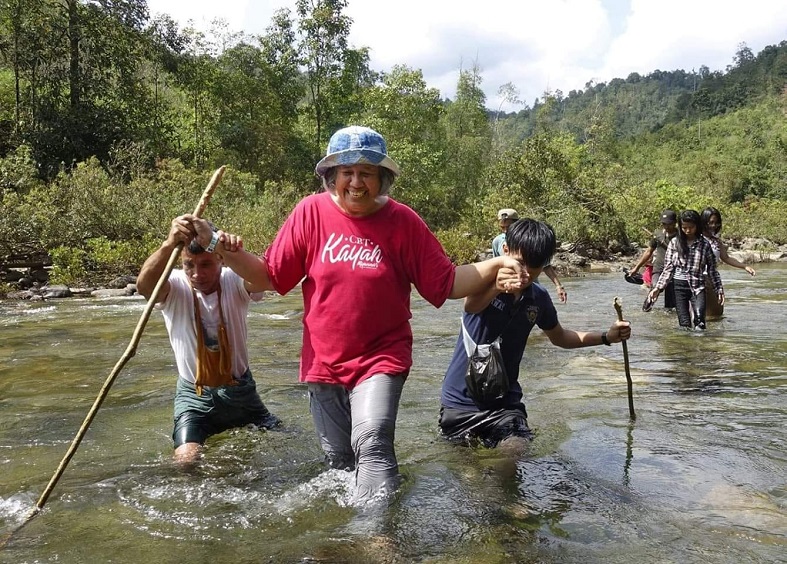
What advice do you have for CBT researchers struggling with funding due to academic trends and the rise and fall of “hot topics”?
Often, research is defined too narrowly. I have experience in CBT action research, where community members were part of the research team. We boiled down ‘research’ to the essence of using a well-considered, systematic process to answer a clear and relevant question. Research questions were developed in the field, in the community, with a consultation with other related stakeholders.
We simplified academic research methodology tools to find solutions to local problems. We applied our research findings to help plan and make decisions in the field again. Our team credited research questions to the community and we called this kind of research ‘research for the local community’.
When I look back at many projects I have worked on, even though we didn’t conduct a formal literature review or proposal, I would still call those projects research, because they lead to refining useful knowledge.
If I counted all these projects as research, my first research question was “Are local community members able to manage their own tourism?” My first research findings were knowledge of CBT principles and ten steps for community preparation.
I don’t think research questions are difficult to find if development workers and researchers spend time in the field, connect to people and keep themselves updated with local priorities and global development trends.
Which are the main challenges in SE Asia, in terms of the sustainable development and management of CBT?
In Southeast Asia, at a policy level, governments consider tourism as an economic stimulus, rather than a holistic development activity which can earn income, but also strengthen community participation, and support communities to manage natural and cultural resources.
Governments demand simple and fast results. However, successful CBT requires a long term commitment. Most government projects do not prioritize the ‘content’ of mutual respect and cross cultural learning. They focus on ‘homestay’, ‘community resort’, ‘camp site’, etc., promoting CBT as a product or service. CBT does not need to be ‘accommodation’ or ‘food.’ Communities can design all kinds of services depending on resources and interests.
The highlight and market demand for CBT is a warm welcome and guest-host interaction. We need to select appropriate sites, to train and coach community members, design great host-guest experiences, and promote to suitable niche markets.
Supporting organizations or facilitators need real, deep knowledge in tourism and community work to succeed. NGO’s and government frequently think CBT is ‘easy’ and underestimate the amount of time and effort needed to develop a successful CBT. Many projects are initiated without learning from past successes and failures. If short of skill, knowledge and experiences, one should reach out to work with experienced organizations. Staff need training for specific tasks as well as to visualize the important steps of the CBT process, including trust building, commitment, marketing etc.
When the private sector works together with a community at the right time, (when there is sufficient demand), with a respectful relationship, it is possible to welcome tourists in the community regularly.
Tour operators can help by preparing visitors to visit the community beforehand. When this is done, the majority of visitors are respectful and it is easier for the community to manage. The CBT Coordinator knows when tourists will arrive. They prepare and delegate jobs to CBT members.
It’s important that CBT really does benefit the whole community, not only CBT service providers. This can be done through contributing a % of income to a village development fund which supports community development. This contribution will help the community members learn that even if they are not CBT member, they can receive benefits indirectly from CBT as well.
CBT feeding on the goodwill of many stakeholders, how should those work together as a team?
I experienced great lessons about the strengths and limitations of multi-stakeholder cooperation during the EU-funded “Corporate Social Responsibility and Market Access Partnerships Project for Thai Sustainable Tourism Supply Chains (CSR-MAP)”. This multi-stakeholder cooperation included CBT communities, restaurants, small hotels, tour guides, and tour operators. The Thai Ecotourism and Adventure Travel Association (TEATA), CBT-I, Greenleaf and ECEAT worked together, with over 200 SME tourism suppliers, to create sustainable tourism standards for Thailand, based on the GSTC.
We then included green suppliers into innovative green tourism routes and held a FAM trip for European tour operators to test the new routes. The stakeholders in the supply chain gained a lot of knowledge and skills and improved trusting relationships from working together.
Unfortunately, the Ministry of Tourism and Sports did not follow up on the project effectively. However, The CBT Standard was built upon by Designated Areas for Sustainable Tourism Administration (DASTA). TEATA built on this project by significantly increasing their capacity to work with local communities systematically.
The lesson at the stakeholder level was to give stakeholders challenging, concrete tasks to do together. It’s easy to waste time arguing about abstract ideas. Concrete tasks pushed our team to work together hard to achieve something. We worked until late at night and saw each other’s effort. The experience of working together improved our mutual understanding and respect.
Government is often the biggest obstacle for scaling up results. Major donor projects put a lot of faith in ‘government mechanisms’ to ensure sustainability. But, in practice government often lacks ownership for initiatives which could be scaled up, and lacks enthusiasm to learn from NGOs and civil society experiences. How to build ‘ownership’ in government is a huge challenge. When governments do ‘take ownership’ they should continue to actively draw on civil society experiences.
I am very happy for my later years of CBT advocacy. I have been lucky enough to contribute my passion, knowledge and experiences fully. Colleagues from previous CBT initiatives moved on to work together in Inclusive Tourism Supply Chain partnerships, at the International Trade Center (ITC).
I have been responsible for community mobilization and capacity building, working with Peter Richards who is specialized in Market Access and Marlon Van Hee coordinating with tour operators in Europe. In Myanmar, we have a had a great team of local colleagues in Kayah and Thanintharyi.
Our roles were to empower and strengthen targeted communities, ground handlers, TOs/DMCs, and market the new tours to TOs /Travel Agent in Europe. The rigorous implementation, based on twenty years of experiences, has brought about successful results: communities empowered, tour operators able to market their products, and tourists satisfied with the products. I am sure that this project will continue after funding comes to an end as we can see genuine demand and supply.
What characterizes a good CBT experience?
The premise of CBT is Great Local Experience + Real Local Benefits.
My colleague, Peter Richards and I try to communicate CBT as:
- Do
- Learn
- Feel
- Share
- Benefit
- Management
- Partnerships
Anything else you’d like to mention?
It is a privilege to have been able to work from grassroots NGOs to donor-funded, UN projects. A combination of tourism demand for local experiences; a sincerely passionate and like-minded working team; accumulated knowledge, experience; and support by ITC in Kayah state under the UN brand have enabled our team to open doors and minds and refine a useful approach for CBT development in Myanmar and The Gambia. This is an excellent conclusion to a life’s work so far!
Thank you, Potjana.
Connect with Potjana Suansri on LinkedIn or visit her website.
Did you enjoy our interview with Potjana Suansri on how to succeed with community-based tourism – lessons from Thailand, Myanmar and The Gambia? Please share and spread the word!

